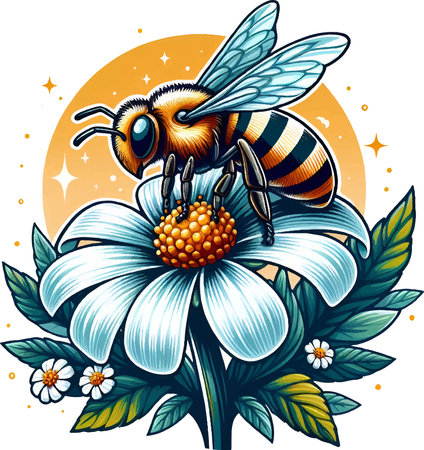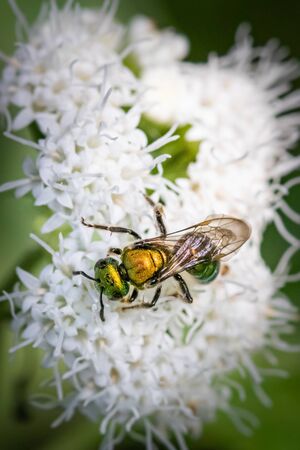Introduction to Seasonal Pests in the U.S.
Across the United States, the types of pests that invade homes and yards can change dramatically from month to month and region to region. Understanding these seasonal variations is key for homeowners who want to protect their property and maintain a healthy living environment. Different climates, weather patterns, and regional ecosystems mean that a pest common in Florida in July might be entirely absent in Oregon at the same time. Recognizing which insects are likely to appear during specific months—and in your particular area—enables more effective and timely pest management strategies. Early identification helps prevent infestations before they get out of hand, saving time, money, and stress. Whether it’s springtime ants marching into kitchens in the Midwest or fall stink bugs sneaking indoors on the East Coast, knowing what to look for and when can make all the difference in keeping your home pest-free throughout the year.
Spring Insect Pests: Emerging Critters by Region
As temperatures rise and the days get longer, spring marks the reawakening of many insect pests across the United States. However, the types of pests you’re likely to encounter can vary widely depending on your region. Below is a detailed look at the most common springtime pests in each major U.S. region, along with when you’re likely to spot them.
Northeast
Homeowners in the Northeast often face an early wave of ants, especially carpenter ants that invade homes in search of food and nesting spots. Ticks also become active as soon as the weather warms, posing health concerns due to Lyme disease. Additionally, Eastern subterranean termites start swarming in late spring, threatening wooden structures.
Common Spring Pests in the Northeast
| Pest | Active Months |
|---|---|
| Carpenter Ants | March–May |
| Ticks | April–June |
| Termites (Eastern Subterranean) | May–June |
South
The warm, humid conditions of the South encourage rapid pest activity. Fire ants are notorious for their painful stings and aggressive mounds in yards. Mosquitoes emerge early and thrive through spring, making outdoor activities challenging. Subterranean termites also swarm during this time and pose serious risks to homes.
Common Spring Pests in the South
| Pest | Active Months |
|---|---|
| Fire Ants | March–June |
| Mosquitoes | April–June |
| Subterranean Termites | March–May |
Midwest
The Midwest sees an uptick in boxelder bugs and Asian lady beetles seeking shelter inside homes as temperatures fluctuate. As lawns green up, grubs begin feeding on grassroots, leading to potential lawn damage later in the year. Carpenter bees also become active, boring into untreated wood around homes and decks.
Common Spring Pests in the Midwest
| Pest | Active Months |
|---|---|
| Boxelder Bugs | March–May |
| Grubs (Lawn Beetle Larvae) | April–May |
| Carpenter Bees | April–June |
West
The Western U.S. varies from rainy coastal regions to arid deserts, but certain pests are common. Argentine ants begin forming large colonies indoors and outdoors. Western subterranean termites start swarming during wet springs. In drier areas, earwigs can invade gardens and occasionally find their way inside.
Common Spring Pests in the West
| Pest | Active Months |
|---|---|
| Argentine Ants | March–May |
| Western Subterranean Termites | April–June |
| Earwigs | April–June |

3. Summer Surge: High-Activity Pests Across America
As the temperatures rise and humidity increases, summer brings a surge in insect activity throughout the United States. Many pests become highly active during these warmer months, posing health concerns and property risks for households and businesses alike. Understanding which pests to watch for—by both region and month—can help you take timely preventive action.
Common Summer Pests Coast to Coast
Across much of the country, mosquitoes reach peak populations between June and August. Not only are their bites irritating, but they can also transmit diseases like West Nile virus and Zika. Ants, particularly carpenter ants, may invade homes in search of food or nesting sites, causing structural damage if left unchecked. Flies—including house flies and fruit flies—multiply rapidly in summers warmth, becoming a nuisance in kitchens and outdoor gatherings.
Regional Variations in Pest Activity
In the Northeast and Midwest, ticks thrive in wooded and grassy areas during summer, increasing the risk of Lyme disease. In the Southeast, fire ants build expansive mounds that threaten pets and children with painful stings. The Southwest contends with scorpions and kissing bugs, which can pose unique dangers to residents.
Pest Risks to Health and Property
Termites remain a significant concern in southern states during summer, as their colonies expand rapidly and can cause costly structural damage before theyre even detected. Stinging insects such as wasps, hornets, and yellow jackets are also more aggressive in summer, increasing the chance of painful encounters near homes or playgrounds.
By understanding which pests are most active in your area each summer—and recognizing the potential risks they bring—you can better protect your family, pets, and property from seasonal infestations.
4. Fall Invaders: Preparing for Cold-Season Pests
As the crisp air of fall sweeps across the United States, many insects begin seeking warmer shelter—often inside our homes. This seasonal migration indoors is a nationwide phenomenon, but the specific pests you’ll encounter can differ based on your region. Understanding which bugs to watch for and how their behaviors change as temperatures drop is key to effective pest management.
Common Fall Invaders by Region
| Region | Typical Fall Pests | Behavior & Shelter Preferences |
|---|---|---|
| Northeast & Midwest | Stink Bugs, Boxelder Bugs, Cluster Flies, Asian Lady Beetles | Seek warmth in attics, wall voids, and around windows; often found in large numbers on sunny exterior walls before moving indoors. |
| Southeast | Cockroaches, Spiders, Ants | Move indoors as outdoor conditions cool and food sources dwindle; attracted to kitchens and bathrooms. |
| Southwest & West Coast | Earwigs, Silverfish, Crickets | Look for humidity and warmth in basements or garages; may also enter through gaps around doors and windows. |
| Mountain & Plains States | Mice (technically not insects), Western Conifer Seed Bugs | Mice enter homes for warmth; seed bugs gather on siding and sneak into cracks. |
Why Do These Pests Move Indoors?
Insects are cold-blooded and rely on environmental heat to survive. As daytime highs dip, these pests instinctively search for protected spots that offer stable temperatures. Homes provide ideal microclimates—especially in wall cavities, attics, basements, and even under appliances.
Regional Tips for Prevention
- Northern States: Check weatherstripping on windows and doors. Seal cracks in siding and foundation before the first frost.
- Southern States: Keep kitchens clean and dry. Fix leaky pipes to reduce humidity that attracts roaches and ants.
- Western States: Store firewood away from your home’s foundation. Install door sweeps on garage doors to block entry points.
- Everywhere: Inspect screens for tears, use caulk to seal gaps, and remove yard debris where pests may hide.
Quick Tip:
If you notice an unusual number of bugs congregating on the sunny side of your house in late September or October, act quickly to seal up entry points—they’re preparing to move indoors!
5. Winter Surprises: Insects That Stick Around
When most people think of winter, they imagine a break from bugs—but thats not always the case. Even as temperatures drop across the United States, several persistent pests continue to pose problems inside homes and businesses. Understanding which insects remain active during colder months can help you avoid unpleasant surprises and protect your property year-round.
Common Cold-Weather Culprits
While many insects die off or go dormant, some have adapted to survive indoors or in sheltered outdoor spaces. Among the most common winter invaders are cockroaches, which thrive in heated homes, and spiders, often found in basements and attics. Silverfish and carpet beetles also make their presence known, feeding on fabrics and stored goods when food sources become scarce outside.
Regional Differences
The types of winter pests you encounter can vary by region. For example, in the southern U.S., mild winters mean certain ants and mosquitoes may remain active well into December or January. In northern states, rodents like mice and rats are more likely to move indoors for warmth, sometimes bringing fleas or mites with them.
Pest Control Tips for Winter Months
To keep these cold-weather pests at bay, seal cracks around doors and windows, store food in airtight containers, and reduce indoor humidity with dehumidifiers. Regularly inspect seldom-used spaces such as attics, basements, and garages for signs of insect activity—droppings, shed skins, or chewed materials can all indicate an infestation that needs prompt attention.
Staying vigilant about seasonal pest identification—even in winter—ensures your home stays comfortable and pest-free all year long.
6. Quick ID Guide by Month and Area
For U.S. homeowners, knowing which pests to expect—and when—can save a lot of trouble. The following easy-reference guide helps you identify likely culprits based on your region and the time of year. Use these tips to stay one step ahead of unwanted guests in your home or yard.
Quick Pest Reference Table
| Region | Spring (Mar-May) | Summer (Jun-Aug) | Fall (Sep-Nov) | Winter (Dec-Feb) |
|---|---|---|---|---|
| Northeast | Ants, Termites, Ticks | Mosquitoes, Wasps, Fleas | Stink Bugs, Spiders | Mice, Cluster Flies |
| Southeast | Termites, Fire Ants | Palmetto Bugs, Mosquitoes | Chinch Bugs, Cockroaches | Silverfish, Rodents |
| Midwest | Boxelder Bugs, Ants | Mosquitoes, Japanese Beetles | Ladies Bugs, Spiders | Mice, Stink Bugs |
| Southwest | Sugar Ants, Scorpions | Cockroaches, Mosquitoes | Tarantulas, Crickets | Pillbugs, Mice |
| West Coast | Earwigs, Carpenter Ants | Yellowjackets, Spiders | Sowbugs, Silverfish | Roof Rats, House Spiders |
Key Tips for Fast Identification:
- Listen: Unfamiliar scratching or buzzing noises? Check attics and basements for rodents or wasps.
- Look: Spotting sawdust piles? Carpenter ants or termites are likely suspects in spring and summer.
- Check Lights: Swarms of bugs near porch lights in late summer often mean moths or beetles.
- Tiny Bites: Mosquitoes thrive in humid months; flea bites are more common with pets indoors during cooler months.
Pro Tip:
If you’re unsure what’s bugging you, snap a photo and use a regional pest app or consult your local extension office. Staying informed helps keep your home pest-free all year long!
7. Prevention and When to Call a Pro
Smart Steps for Year-Round Pest Control
Preventing seasonal insect invasions begins with good habits and a little knowledge of your region’s common pests. Start by sealing cracks in windows, doors, and foundations, especially before peak pest seasons in your area. Store food in airtight containers, eliminate standing water, and keep landscaping trimmed away from the house. Regular cleaning—especially in kitchens and basements—goes a long way toward deterring unwanted guests.
Recognizing When DIY Isn’t Enough
While basic prevention works for many households, some signs indicate it’s time to call a professional. If you notice recurring infestations despite your best efforts, spot structural damage (like chewed wood or wiring), or see pests that pose health risks (such as wasps, bed bugs, or brown recluse spiders), don’t wait. Rapid population growth or nests inside walls may also require expert intervention to avoid bigger headaches down the road.
How Regional Trends Shape Solutions
Pest control isn’t one-size-fits-all across the U.S. For example, Southern states may face year-round mosquito problems, while the Midwest deals with seasonal boxelder bug swarms. In the Northeast, rodents seek warmth indoors as temperatures drop. Professionals in each region tailor their solutions based on local insect activity cycles and climate conditions. Consulting a local pest control expert ensures treatments target the pests you’re most likely to encounter—at just the right time of year.
Stay Proactive
A combination of routine prevention and timely professional help keeps your home pest-free no matter where you live or what season it is. Awareness of both monthly trends and regional differences is your best defense against unwelcome insect invaders.


